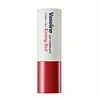What's inside
What's inside
 Key Ingredients
Key Ingredients

 Benefits
Benefits

 Concerns
Concerns

 Ingredients Side-by-side
Ingredients Side-by-side

Caprylic/Capric Triglyceride
MaskingDiisostearyl Malate
EmollientHydrogenated Polyisobutene
EmollientSynthetic Wax
AbrasiveBis-Diglyceryl Polyacyladipate-2
EmollientButyrospermum Parkii Butter
Skin ConditioningMicrocrystalline Wax
Emulsion StabilisingPetrolatum 3%
EmollientPolyglyceryl-2 Triisostearate
EmulsifyingSilica
AbrasiveSilica Dimethyl Silylate
EmollientSorbitan Isostearate
EmulsifyingCI 15985
Cosmetic ColorantCI 15850
Cosmetic ColorantTitanium Dioxide
Cosmetic ColorantCI 77492
Cosmetic ColorantParfum
MaskingPentaerythrityl Tetra-Di-T-Butyl Hydroxyhydrocinnamate
AntioxidantDehydroacetic Acid
PreservativeHoney Extract
HumectantBHT
AntioxidantPhenoxyethanol
PreservativeEthylhexylglycerin
Skin ConditioningCaprylic/Capric Triglyceride, Diisostearyl Malate, Hydrogenated Polyisobutene, Synthetic Wax, Bis-Diglyceryl Polyacyladipate-2, Butyrospermum Parkii Butter, Microcrystalline Wax, Petrolatum 3%, Polyglyceryl-2 Triisostearate, Silica, Silica Dimethyl Silylate, Sorbitan Isostearate, CI 15985, CI 15850, Titanium Dioxide, CI 77492, Parfum, Pentaerythrityl Tetra-Di-T-Butyl Hydroxyhydrocinnamate, Dehydroacetic Acid, Honey Extract, BHT, Phenoxyethanol, Ethylhexylglycerin
 Reviews
Reviews

Ingredients Explained
These ingredients are found in both products.
Ingredients higher up in an ingredient list are typically present in a larger amount.
This ingredient is also known as shea butter. It is an effective skin hydrator and emollient.
Emollients help soothe and soften your skin. It does this by creating a protective film on your skin. This barrier helps trap moisture and keeps your skin hydrated. Emollients may be effective at treating dry or itchy skin.
Shea butter is rich in antioxidants. Antioxidants help fight free-radicals, or molecules that may harm the body. It is also full of fatty acids including stearic acid and linoleic acid. These acids help replenish the skin and keep skin moisturized.
While Shea Butter has an SPF rating of about 3-4, it is not a sunscreen replacement.
Shea butter may not be fungal acne safe. We recommend speaking with a professional if you have any concerns.
Learn more about Butyrospermum Parkii ButterCi 15850 is the pigment color red. It is an azo dye and created synthetically.
Azo dyes need to be thoroughly purified before use. This allows them to be more stable and longer-lasting.
This ingredient is common in foundations, lipsticks, and blushes. This color is described as brown/orangey red.
It has many secondary names such as Red 6 and Red 7. According to a manufacturer, Red 6 usually contains aluminum.
Learn more about CI 15850Ci 77492 is also hydrated iron III oxide. It's sole purpose is to give a yellow hue to products.
Iron III oxides are classified as inorganic chemicals for coloring.
Synthetically created Ci 77492 is considered safer than those naturally found. This is because the synthetically created version may contain less impurities. Iron oxides are generally non-toxic and non-allergenic.
Learn more about CI 77492